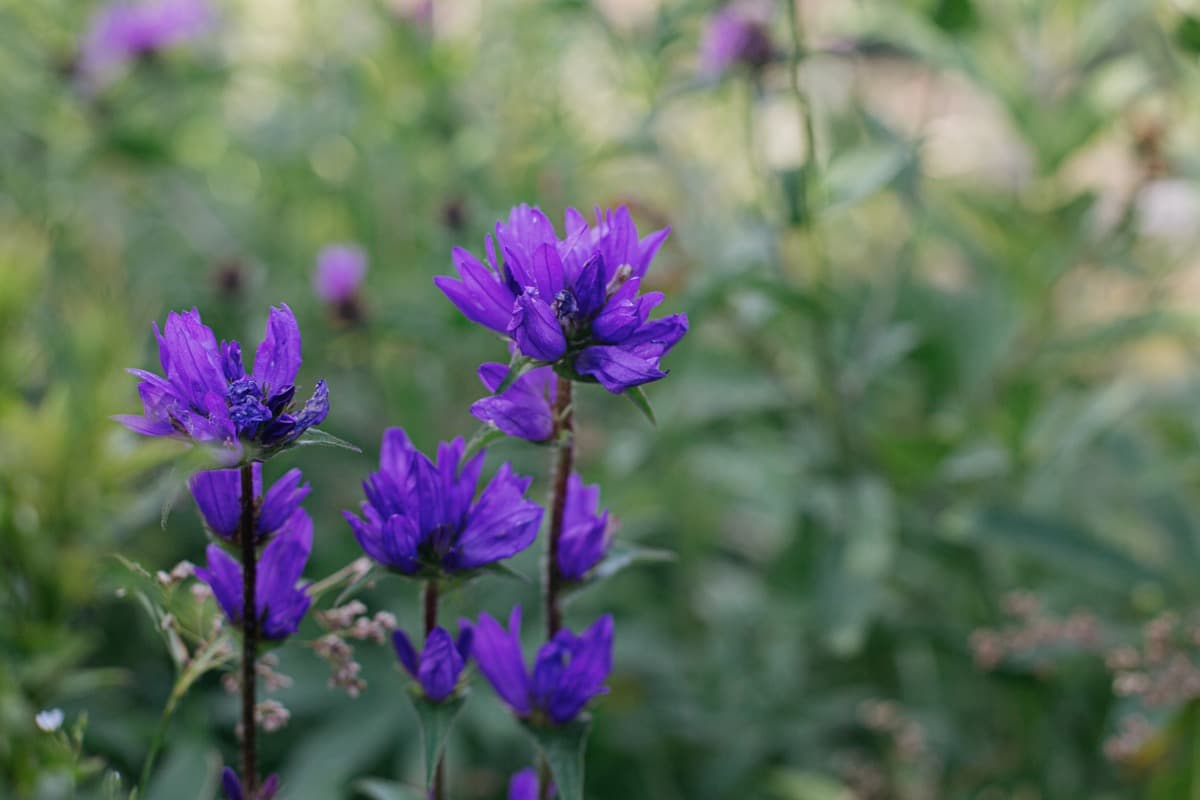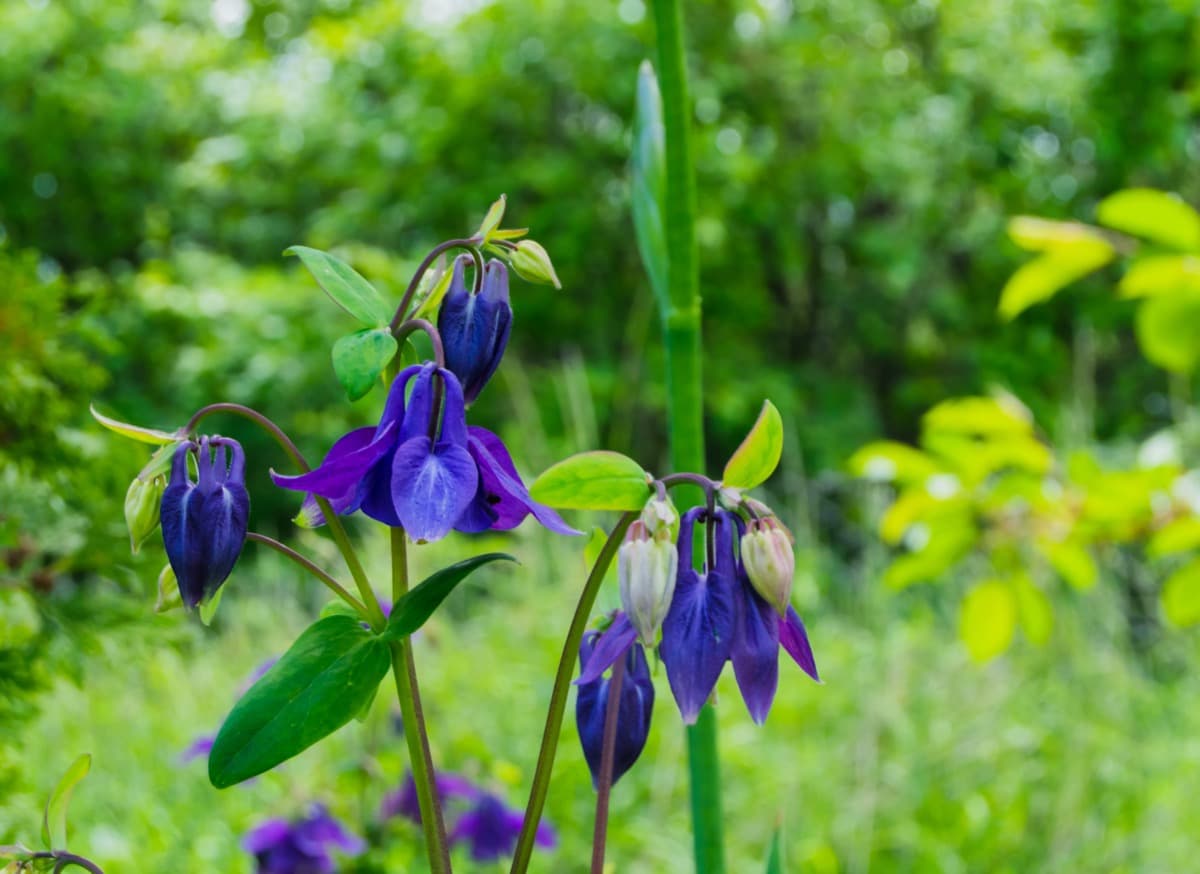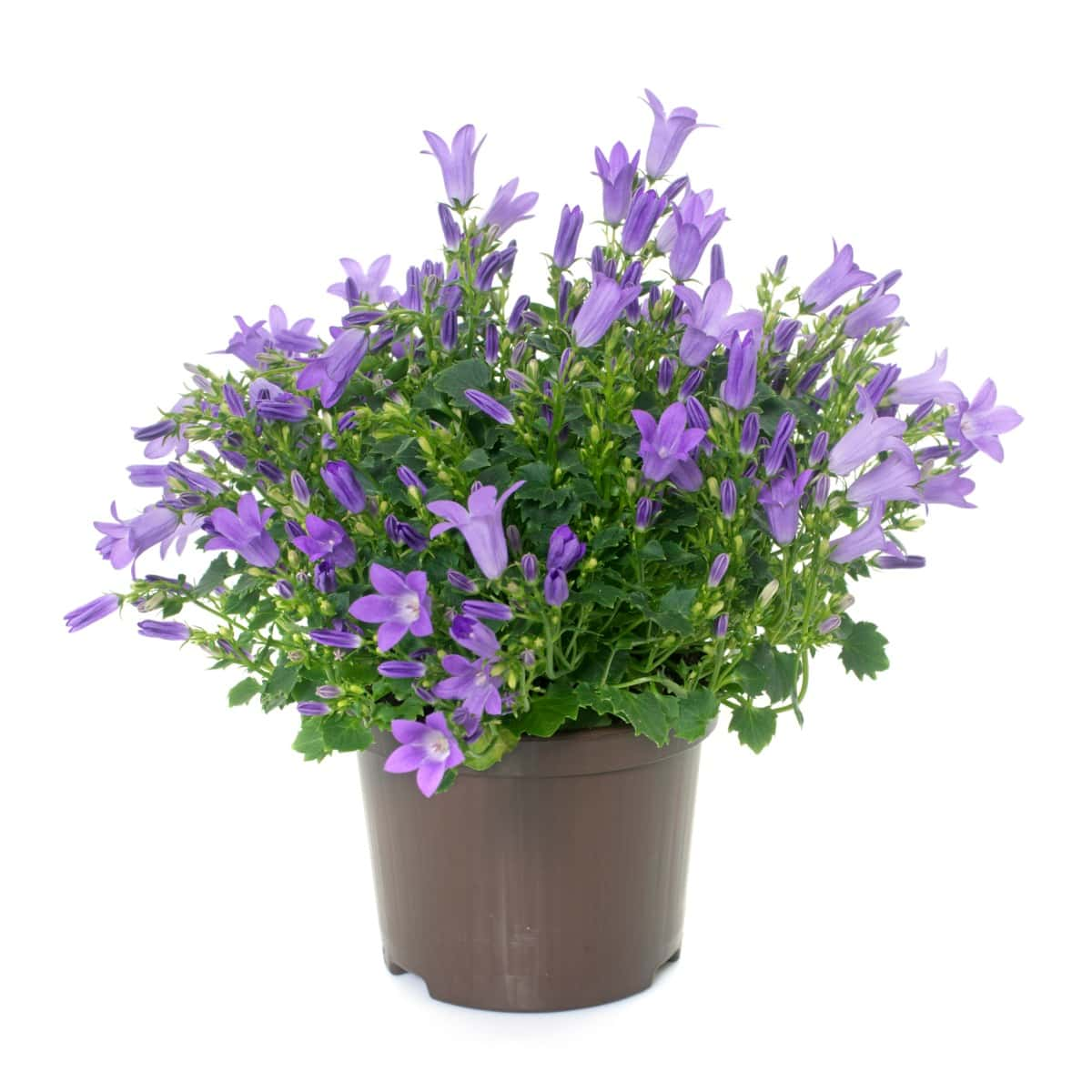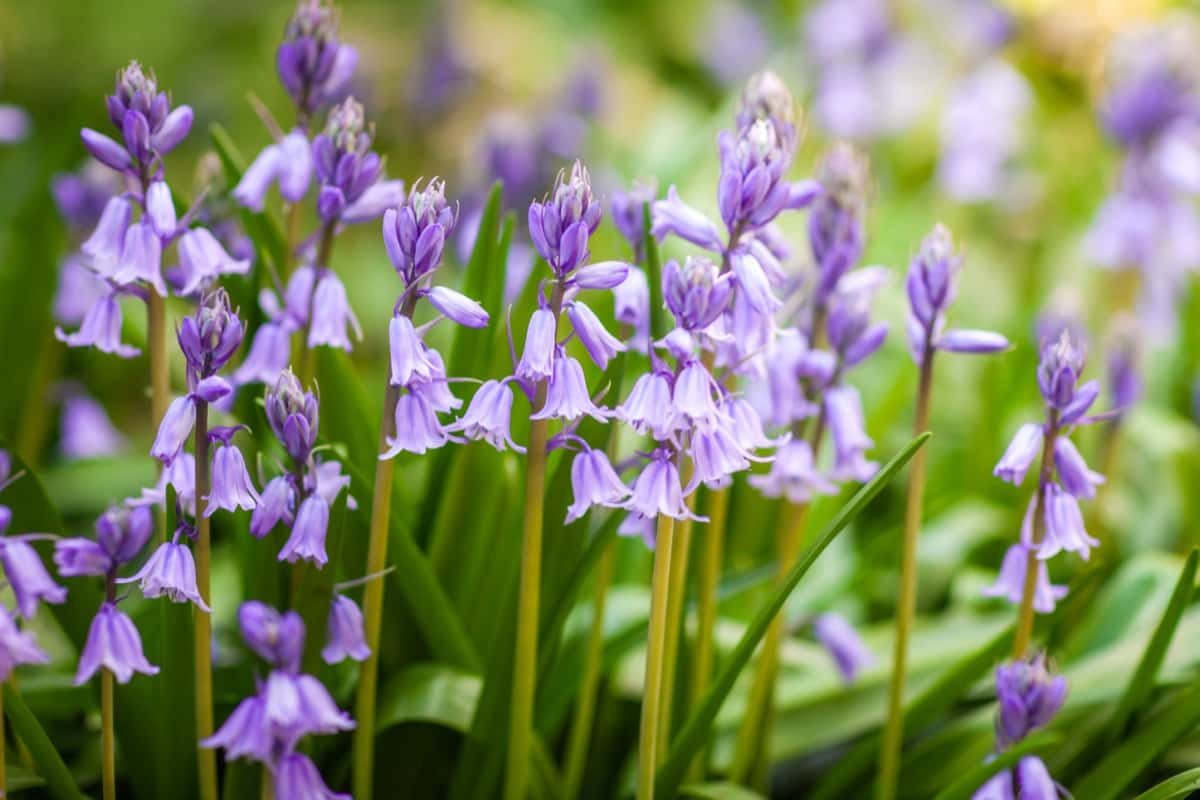If you’re looking for a dependable, low-maintenance perennial for your garden, look no further than the Campanula Bellflower. This hardy plant is perfect for novice and experienced gardeners, providing beautiful blooms all summer. This pretty bloom is easy to care for and can tolerate growing conditions. Campanula Bellflower is a perennial plant that produces blue, purple, or white flowers. The plant gets its name from the bell-shaped blooms that it produces.

This flower is relatively easy to care for. It needs full sun but can also tolerate partial shade. The plant is drought-tolerant and does not need much water once established. Campanula Bellflower is also relatively resistant to pests and diseases. The Campanula Bellflower is a beautiful flower that comes in many different colors. They are perfect for adding to any garden or landscaping design. There are many different types of Campanula Bellflowers, so be sure to research them before choosing the right one for your needs.
How to Grow and Care for Campanula Bellflower in Your Garden
Types of Campanula Bellflower
Scotch Bluebell
The Scotch bluebell is an herbaceous perennial in the bellflower family. The plant has hairy, ovate leaves, producing blue, tubular flowers in summer. The Scotch bluebell is popular in borders, rock, and wildflower gardens. It is also sometimes grown as a houseplant.
Dwarf Bellflowers
Dwarf bellflowers are one of the most popular varieties. These small, compact plants are perfect for adding color to any garden or patio. Dwarf bellflowers come in various colors: blue, pink, and purple. The flowers are produced in clusters and have a cup-like shape. Each bloom is approximately 1 inch in diameter.
In case you missed it: How to Grow and Care for Black-eyed Susan in Your Garden: A Beginners Guide

Carpathian Harebell
It has delicate, blue-violet flowers that bloom in summertime, and its slender leaves are bright green. Because of their small size and pretty flowers, you can use them as ornamental plants in gardens. This bellflower does well in full sun or partial shade and prefers moist soil. It is fairly tolerant of different soil types as long as it is not too dry or too wet. The Carpathian harebell is also relatively drought-tolerant once it is established. This plant can spread through its rhizomes, so it may need to be divided every few years to keep it under control.
American Bellflower
It gets its name from its bell-shaped flowers, which can be either blue or white. The plant typically blooms in late summer and early fall.
Climate Suitable for Growing Campanula Bellflower in the Garden
Campanula Bellflower is a beautiful, delicate flower that can brighten any garden. If you live in a Mediterranean climate, then Campanula Bellflowers will do very well in your garden. Choose a place in your garden that gets plenty of sunlight. Campanula Bellflowers need at least 6 hours of sunlight each day to thrive.
Make sure the soil in your chosen spot is well-draining. Campanula Bellflowers won’t do well in soggy soil. Water your Campanula Bellflowers regularly, avoiding getting the leaves wet. Too much moisture can cause the leaves to rot. The ideal garden temperature for growing Campanula Bellflower is between 16 to 22°C. If the temperature is too cold, the plant will not bloom. If the temperature is too hot, the plant will wilt.
Soil Requirement for Growing Campanula Bellflower in the Garden
To ensure your Campanula Bellflower grows healthy and strong, it is important to plant it in well-drained soil that contains high levels of organic matter. The ideal soil pH for Campanula Bellflowers is between 6.0 and 7.5. If your soil is too alkaline or acidic, you can amend it with sulfur or lime. Once you have chosen the perfect spot for planting, dig a hole twice as wide as the root ball of your plant.
Campanula Bellflower does not like wet or soggy soil, so make sure the soil is not too dense or compacted. If your garden has heavy clay soil, you can improve drainage by mixing in some sand or organic matter. The Campanula Bellflower is a perennial plant that blooms in the summer. The Campanula Bellflower grows best in full sun to partial shade and prefers well-drained soil. It is tolerant of drought and can be grown in various soil types, including sandy, loamy, and clay soils.
In case you missed it: How to Grow and Care for Agave in Your Garden: A Step-by-Step Beginners Guide

Water Requirement for Growing Campanula Bellflower in the Garden
The Campanula Bellflower is a beautiful, delicate flower that can add a touch of beauty to any garden. However, these flowers are not easy to grow and care for. The most important thing to remember when growing Campanula Bellflowers is that they require a lot of water. These flowers must be watered frequently, especially during the hot summer. If you do not water your Campanula Bellflowers enough, they will quickly wilt and die.
The watering frequency will depend on a few factors, such as the weather, the type of soil, and the size of your plant. During hot summer days, you might need to water your Campanula Bellflower every day or every other day. You can water less often in cooler weather or with well-drained soil. Stick your finger into the soil to check if your plant needs watering. If the soil is dry up to your first knuckle, it’s time to water. When you water your Campanula Bellflower, give it a deep drink so that the water reaches the plant’s roots.
Propagating Campanula Bellflower
From Seed
To propagate the Campanula Bellflower from seed, sow the seeds in a well-drained, starting mix in spring. Sow the Campanula Bellflower seeds thinly and cover them with a thin layer of sand or vermiculite. Keep the soil moist, and keep the container in a warm, sunny spot. The seeds should germinate within two to three weeks. Once the seedlings have appeared, thin them out to be about 4 inches apart. Transplant the seedlings into pots when they are large enough to handle and grow until they are big enough to plant in the garden.
From Rhizomes
Propagating Campanula Bellflower from rhizomes is a simple process that can be done in early spring or fall. Rhizomes are thick, fleshy roots that store nutrients and water for the plant. Dig up a section of the rhizome and divide it into 2-3 pieces using a sharp knife to propagate. Each piece should have at least one bud or eye.
Plant the rhizomes in moist, well-drained soil and cover them with 1-2 inches of mulch. Water regularly to keep the soil moist. In 4-6 weeks, you may observe new growth emerging from the buds. Once the plants are established, they can be transplanted to their location in the garden.
In case you missed it: How to Grow and Care for Forsythia in Your Garden: A Step-By-Step Guide for Beginners

Campanula Bellflower Plant Care
Fertilizer Requirement for Growing Campanula Bellflower in the Garden
Campanula Bellflower is a beautiful flowering plant that can add beauty to any garden. They are easy to care for, but there are a few things to remember regarding fertilizer requirements. Campanula Bellflowers need soil that is rich in organic matter. The perfect way to achieve this is by adding compost or manure to the soil.
Ensuring the soil is well-draining is also important, as campanulas will not tolerate sitting in water. Regarding fertilizer, campanulas do best with a balanced 10-10-10 formula applied monthly during the growing season. Be sure not to over-fertilize, as this can cause the plants to produce too many leaves and not enough flowers.
Pruning Campanula Bellflower plants
Pruning Campanula Bellflower plants is a simple process that can be done in the late winter or early spring. You will want to prune back the plant by about one-third to one-half its overall height. This will encourage new growth and help the plant to produce more flowers. After you have pruned the plant, you can fertilize it with a balanced fertilizer.
Pruning Campanula Bellflower plants is a great way to keep them healthy. Start by pruning back any dead or dying stems. Then, cut back the remaining stems by one-third to one-half their original length. This will help to improve new growth and keep the plant looking its best.
Campanula Bellflower plant care in winter
When the weather turns cold and the days grow shorter, it’s time to start thinking about how to care for your Campanula Bellflower plant in winter. Bringing your Campanula Bellflower plant inside is best if winter temperatures get below freezing. Place it in a spot with plenty of sunlight, such as near a south-facing window. Be sure to water your plant regularly, as it will need extra moisture to survive the colder weather.
In case you missed it: How to Grow and Care for Black-eyed Susan in Your Garden: A Beginners Guide

If the soil around your plant dries out, it could cause the leaves to turn brown and drop off. In winter, you should only fertilize your Campanula Bellflower plant every few weeks. Over-fertilizing can do more harm than good during this time of year. Removing dead or dying leaves from your Campanula Bellflower plant is important, as with any plant. In the springtime, this will help encourage new growth.
Pests and Diseases of Campanula Bellflower and their Control
One of the most common pests of Campanula Bellflower is aphids. These small, soft-bodied insects can suck the sap out of plants, causing stunted growth, yellowing leaves, and even plant death. To control aphids, spray them with water from a garden hose to knock them off the plant. You can use neem oil.
Common pests include slugs and snails, which can chew through plant leaves and stems. You can use an iron phosphate product to control these pests. Finally, Japanese beetles can also be a problem for Campanula Bellflower. These shiny black beetles feast on the leaves of many plants, including Campanula Bellflower. To control Japanese beetles, trap them in a jar baited with ripe fruit or use an insecticide containing pyrethrin.
Powdery mildew disease is caused by a fungus that attacks the plant leaves, causing them to appear covered in a white powdery substance. The leaves will eventually turn yellow and die. Black spot disease attacks the plant leaves, causing them to appear covered in black spots. The leaves will eventually turn yellow and die. Rust disease attacks the plant leaves, causing them to appear covered in orange or brown spots. The leaves will eventually turn yellow and die. To control these diseases, try using fungicides.
In case you missed it: How to Grow and Care for the Crown of Thorns in Pots

Conclusion
The Campanula Bellflower is a beautiful, easy-to-care-for plant that makes the best addition to any garden. With proper care, they will thrive and produce abundant blooms that will add color and beauty to your outdoor space. Campanula Bellflowers are a beautiful and unique addition to any garden. They are easy to grow and will provide you with years of enjoyment. With some knowledge and effort, you can display these gorgeous flowers in your garden.
- Flower Garden Designs and Layouts for Beginners
- Planting and Spacing Techniques in Papaya: A Beginner’s Guide
- Growing Gold: Essential Techniques for Planting Pineapples
- How to Make Kalanchoe Plant Bushy: Home Remedies and Solutions
- 11 Reasons Why Your Gardenia is Not Blooming: Home Remedies and Solutions
- Eco Elegance: The Guide to Designing a Drought-Tolerant Landscape
- Gardening on a Slope: Strategies for Hillside Landscaping
- Nourish and Flourish: Top Organic Mulches for Thriving House Plants
- Everything You Want to Know about Indian Mogra Flower: Discover Uses and Growing
- Green Thumb Success: Expert Tips for Cultivating Greenhouse Pumpkins All Year Round
- Maximize Growth & Flavor: The Ultimate Guide to Companion Planting in Herb Gardens
- How to Control Rhododendron Problems Naturally: Home Remedies and Organic Ways to Fix Them
- Natural Magic: The Remarkable Benefits of Cinnamon for Plants
- Best Steps to Revive Dying Tulip with Natural and Organic Treatment
- 10 Reasons Why Your Angel Trumpet is Not Blooming: Remedies and Treatment
- How to Fix Periwinkle Leaf and Flower-Related Problems: Natural Remedies and Solutions
- How to Fix Zinnias Leaf and Flower Problems: Discover Natural and Home Remedies
- Organic Steps to Induce Lemon Tree Flowers: A Comprehensive Guide
- Bloom Booster: Crafting the Perfect Homemade Bougainvillea Fertilizer
- Optimizing Growth: A Guide to Applying NPK Fertilizer for Potted Plants
- 10 Best Homemade Fertilizers for Rubber Plant: DIY Recipes and Application Method
- How to Boost Female Pumpkin Flowers: Effective Steps for More Flowers and High Yields
- Transform Your Indoor Garden: Top Benefits of Pink Salt for Houseplants
- 10 Best Homemade Fertilizers for Peacock Plants (Calathea): Easy DIY Guide
- Unlock Blooms: 9 Reasons Why Your Potted Chrysanthemum is Not Blooming
- 8 Reasons Why Your Potted Hibiscus is Not Blooming: Fix it with Simple Solutions
- Unlock Blooms: 9 Key Reasons Your Potted Frangipani Won’t Flower
- 10 Reasons Why Is My Ice Plant Not Blooming: Remedies and Treatment
- 10 Reasons Why My Potted Hydrangea Not Blooming: Treatment and Remedies
- 10 Reasons Why is My Wisteria Not Blooming: Remedies and Treatment
- 10 Reasons Why is My Goldfish Plant Not Blooming: Remedies and Treatment
- Maximize Your Space: Ultimate Guide to Balcony Gardening with Grow Bags
- 10 Reasons Why Your Iris is Not Blooming: Remedies and Treatment
- 10 Reasons Why Your Anthurium Plant is Not Blooming: Treatment and Remedies
- 10 Reasons Why Your Aquaponic Plants Are Not Flowering: Remedies and Treatment
- 10 Reasons Why Your Agapanthus is Not Flowering: Remedies and Treatment